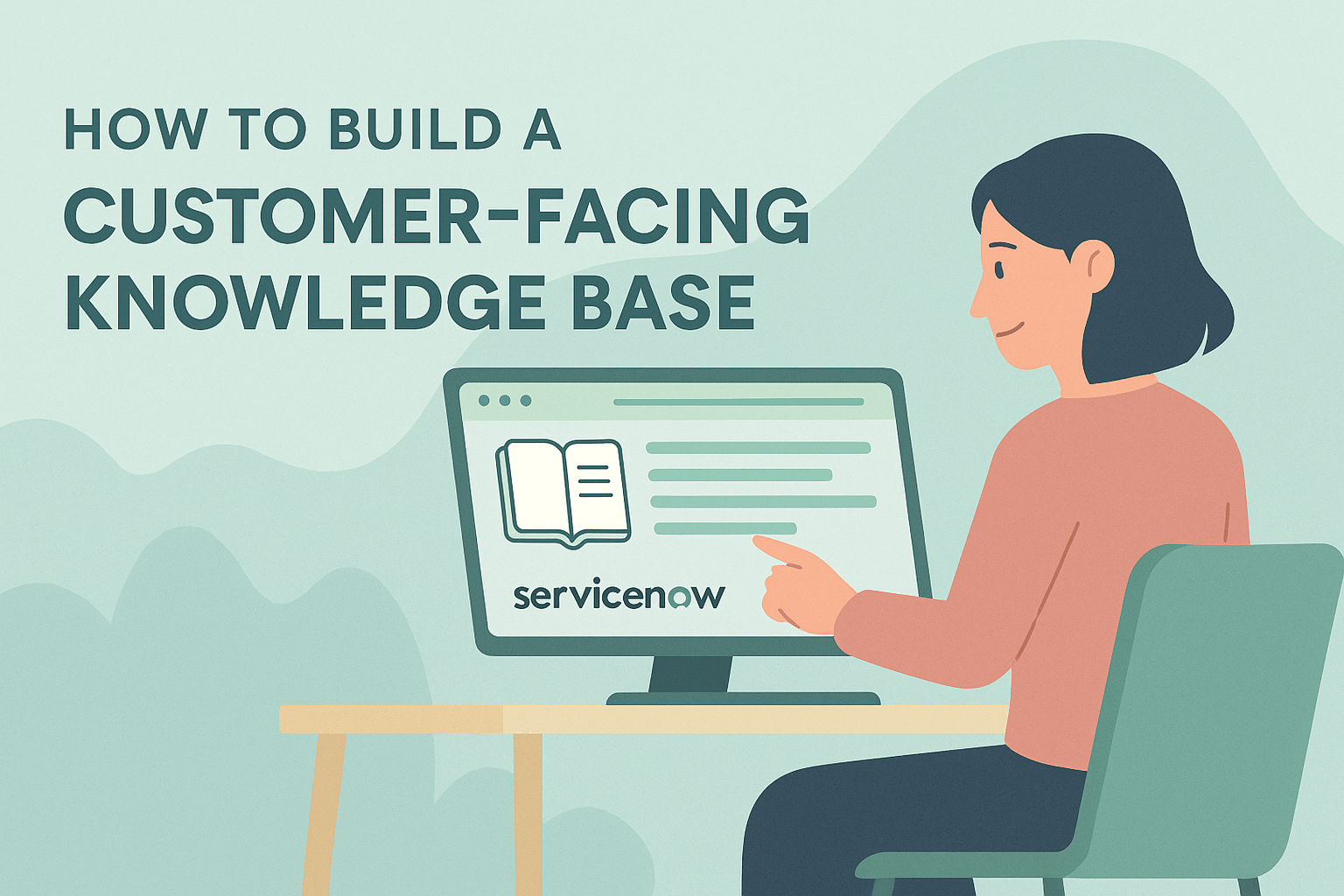How to Build a Customer-Facing Knowledge Base That Actually Helps
Some support tickets should never have been raised — not because they weren’t valid, but because the answer already existed… just not where the customer could find it.
A well-structured customer-facing knowledge base (KB) is one of the most scalable ways to:
- Reduce ticket volumes
- Improve customer satisfaction
- Increase your support team’s capacity without hiring
And if your organisation is adopting a platform like ServiceNow, you already have the tools to make that happen — you just need the right approach.
This post walks you through how to do it.
Why Every Support Team Needs a Customer-Facing Knowledge Base
Your support team doesn’t scale linearly. But documentation does.
When customers can reliably self-serve — especially for onboarding steps, recurring issues, or “how do I?” questions — it creates space for your team to focus on what truly requires a human touch.
A well-maintained knowledge base:
- Reduces repeat tickets
- Helps new users onboard faster
- Builds trust in your product or service
- Deflects issues without compromising quality
It’s not just about “reducing load.” It’s about creating a support experience that works whether a customer talks to your team or not.
What a Great Customer Knowledge Base Includes
A helpful knowledge base is:
- Searchable: Answers surface quickly (especially via ticket forms)
- Task-focused: Written around what the customer is trying to achieve
- Clear and structured: Consistent formatting, easy scanning
- Actively maintained: Reviewed and updated regularly
Using ServiceNow? Here’s What to Know
If your business uses ServiceNow’s Knowledge Management module, you’re well-positioned to deliver customer-facing documentation.
Here’s how:
- Knowledge Articles can be grouped into categories (e.g. “Getting Started”, “Troubleshooting”, “Product Features”)
- You can use the Service Portal to expose public knowledge articles — without needing additional development
- Article visibility can be managed using user criteria (to limit or grant access externally)
- Feedback tools (“Was this article helpful?” voting) can be enabled for data-driven improvements
Note: A ServiceNow admin will need to configure the portal, user access, and article templates — but these are out-of-the-box features that many organisations underuse.
Internal vs External Knowledge: What Goes Where?
A common mistake is to copy internal SOPs into your customer KB with minimal edits. But internal and external content serve different purposes.
| Internal KB | Customer-Facing KB |
|---|---|
| Detailed workflows, handovers | Simple steps and outcomes |
| Escalation paths, resolution codes | Troubleshooting guidance |
| Technical configuration notes | End-user features and how-tos |
The key: repurpose internal content into external resources — but rewrite with the customer’s mindset in mind.
How to Structure Helpful Articles (That Get Used)
Good KB articles:
- Have a clear goal (e.g. “How to export your data from our platform”)
- Start with a summary of what the reader will accomplish
- Break down steps visually (bullets, numbers, screenshots)
- Link to related articles for deeper context
In ServiceNow: Use Knowledge Templates to keep structure consistent across articles (e.g. sections like Summary, Steps, Related Articles). These can be enforced by Knowledge Blocks or pre-filled fields.
Maintaining Your Knowledge Base Over Time
A KB isn’t a one-time project — it’s a living asset. To keep it useful:
- Assign article owners to each category
- Set up scheduled reviews for articles (e.g. every 90 days)
- Use article feedback data to identify what’s unclear or unhelpful
- Review search analytics (what are users typing that leads nowhere?)
If you’re using ServiceNow, Knowledge Article workflows can include review and expiration dates to prevent outdated content from lingering. There are some great guides here.
Common Pitfalls to Avoid
Avoid these traps when building your customer-facing documentation:
- Dumping raw internal notes into public view
- Creating walls of text without structure or formatting
- Using product/engineering language instead of user terms
- Leaving articles live for years without updates
- Ignoring what customers are actually searching for
Treat Your Knowledge Base Like a Product
The best support teams treat documentation like a core part of their service — not a side project.
That means:
- Thinking in terms of user experience
- Applying continuous improvement
- Embedding documentation into your onboarding and support flows
If you’re using ServiceNow, don’t stop at ticketing. Build a help experience that scales alongside your team.
Next Steps
Want to assess how well your documentation (internal or customer-facing) supports your team’s success? Get fast feedback from your team directly.



